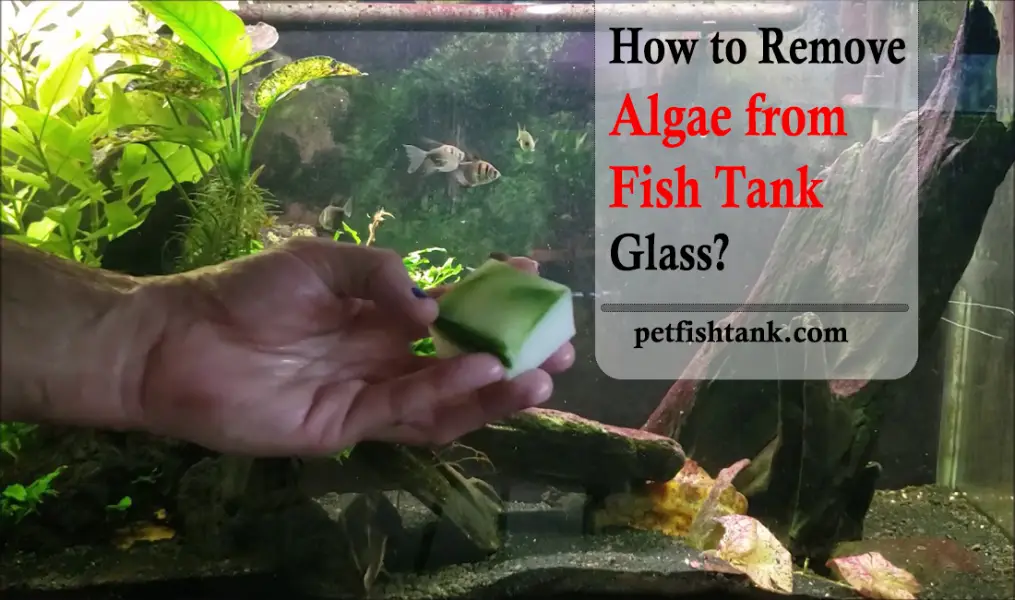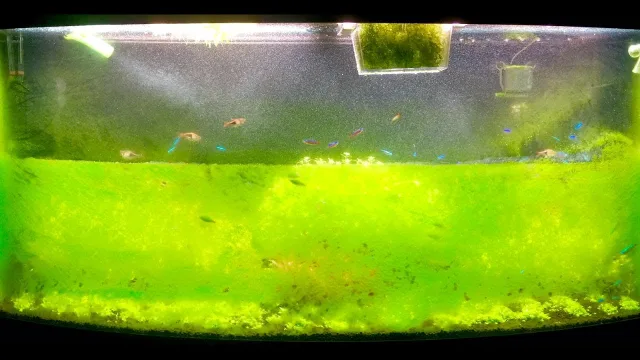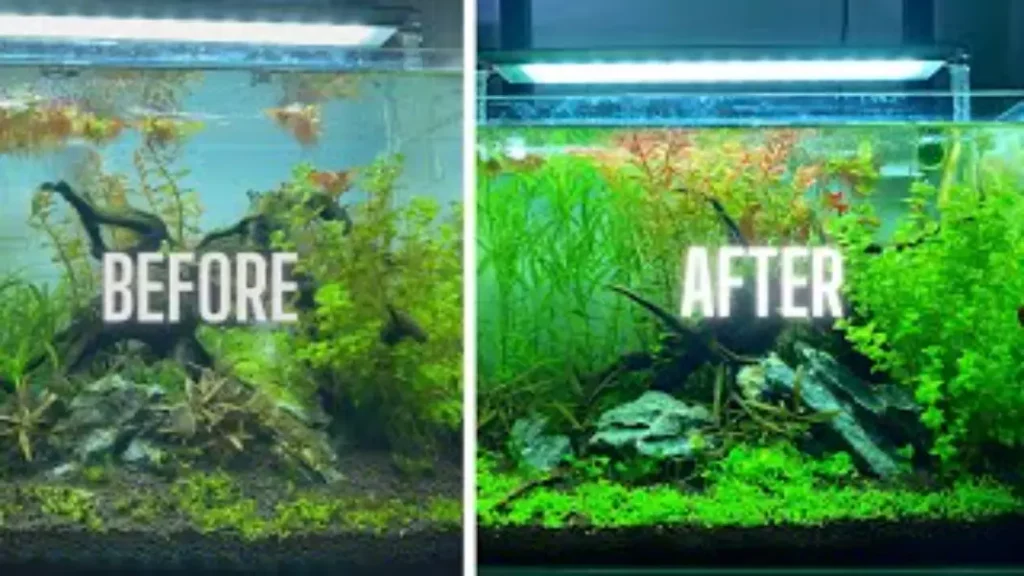Algae is a problem that you will surely have to deal with when it comes to keeping a freshwater aquarium. Light, carbon dioxide, and nutrients are the three things that algae need to survive and grow.
Although introducing algae-eating fish or a few aquarium snails may help you manage the growth of too much algae, there could come a moment when you must perform the cleaning yourself.
This article will show you how to remove algae from fish tank glass

Reason for the Growth of Algae
Algae require the same three essential elements that all plants do to survive: light, water, and nutrients. Algae can spread out like weeds in a garden if any of these factors are in excess.
Water is a need for any aquarium, but you can regulate the quantity of light and nutrients in the water. Some of the common reasons for Algae growth are:
- Long-lasting lighting
- The aquarium is situated in a sunny area
- feeding fish too much
- Too much time passes between water changes
- Keeping a very nutrient-rich water environment
Identification of Green Dust Algae

Green dust algae emerge subtly as if someone softly dusted green icing sugar over your aquarium. As the green dust algae bloom starts to obscure your fish’s vision, you will probably first notice it on the aquarium’s glass.
The algae that cover your tank’s decorations and equipment is usually a darker shade of green than the green dust algae that coats your glass. You may be confident that they are all the same dirty algae.
This occurs because the algae appear lighter in color as a result of light impinging on it from either side of the glass.
Green spot algae and green dust algae might be mistaken for one another. Despite having a similar appearance, the contrasts between the two are clear when put side by side.
Growing in unique circular patterns that eventually blend together is green spot algae. On the other hand, green dust algae are so tiny that it looks like dust.
Use your finger if you are unable to distinguish between the two. You get green dust algae if it readily lifts off with the lightest touch. Green spot algae are the cause if it is obstinate.
Ways to Clean Algae from the Fish Tank
Every aquarium owner must deal with algae growth at some point in time. A certain amount of algae development is typical and healthy, but too much of it is ugly and can harm plants and fish.
Here are the five ways to get rid of algae from the fish tank:
Directly Remove Algae Employing Tools
The simplest approach to remove algae from your aquarium’s walls if it is covering them and making it difficult to see your fish is with an algae scrubber. This soft sponge will not damage your glass or acrylic tanks because it is composed of non-toxic melamine foam.
Easy-to-reach locations, aquarium ornaments, hardscapes, and sometimes even leaves of plants may all be cleaned with a basic toothbrush.
The bristles of a toothbrush can be used to capture the algae strands and then be twisted to wound the algae in order to remove some types of hair algae.
Use of Species that Eat Algae
Consider adding fish, snails, and invertebrate species that consume algae if you intend to get rid of it without doing any of the labor-intensive efforts yourself.
Research the species before you buy them because the best species for you will vary based on your aquarium’s size, whether it is freshwater or saltwater, the other species you have, and other factors.
Some of the algae-eating species are:
- Amano shrimp
- Siamese algae eaters
- Flag fish
- Ramshorn snails
- Nerite snails

Riddance of Additional Organics in the Aquarium
Due to its high adaptability, algae may easily ingest the nitrogen compounds found in fish waste, diseased leaves, leftover food fish food, as well as other organic components.
Removing potential nutrient sources that algae can utilize is beneficial if the tank is still relatively new and has not entrenched itself well.
By rearranging the decorations, adding substrate to the spaces between the hardscape, or installing a more powerful filter or circulation pump, you can increase the water flow which will help control the growth of algae.
Use of Algae Inhibitor:
Finding a chemical treatment that is potent enough to affect the algae in the fish tank while causing no harm to the animals or plants is a tricky balance when it regards chemical treatments.
Although liquid carbon is frequently promoted as an aquarium plant fertilizer, it really acts as an algae inhibitor and is known to slow the growth of algae.
Use of Live Plants:
Because plants use the same sunlight and nutrients as algae consume, having them in your tank can help prevent the growth of algae. You will have fewer algae the fewer of those materials are accessible for it.
Additionally, plants beautify your aquarium and provide a hiding area for your fish, so they are useful in a variety of ways.
Think about the circumstances that the plants need to thrive before selecting them for your aquarium. For instance, different plants thrive at various temperatures and some require more light than others.
Conclusion
Algae is a naturally occurring component of the fish tank ecosystem because it is used as a good food source for algae-eating fish and crustaceans and aids to purge the water of harmful waste compounds.
Most people, nevertheless, consider algae as an unpleasant guest because too much of it can impede the sight of the aquarium and hinder the growth of healthy plants.
Related Posts:
